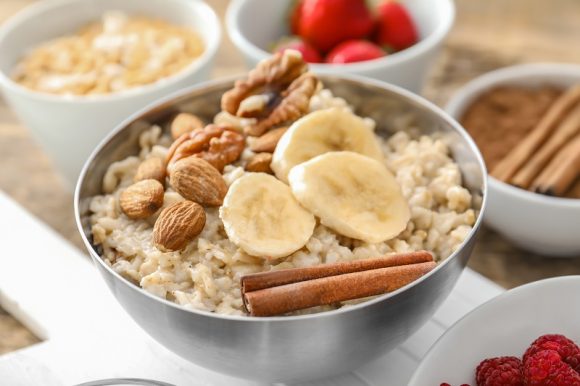Summer is winding down and we are headed into Autumn. The lower temperatures are a sure sign of colder weather ahead. In Chinese medicine, Autumn is the season related to the Lungs and Colon, so we need to pay attention to our health. It’s no surprise there has already been an uptick in patients coming in with allergies and colds. Patients have also been expressing a type of gloom about the prospect of cold weather.
Summer has outdoor, lively, expansive energy. Autumn energy brings introspection, emotional awareness and concerns over health (allergies, colds, etc). As the Lungs are associated with the emotion of grief we often feel “off” without understanding what is happening. In reality, we are connecting to our own losses as leaves begin to change and eventually fall off the trees. A very interesting symbolism and symbiosis with nature.
Here are a few tangible suggestions to help you take better care during Autumn.
- First of all, recognize that life is about change and it is fair to experience shifts in emotions. Be attuned to your inner self and give yourself permission to connect with your emotions, including grief, and process them constructively.
- Dress to protect your Lungs by wearing layers as the temperatures drop and wear a scarf to keep your lungs and throat warm.
- Eat foods that are more pungent and warming to your system. Eat fewer colder foods as we want to balance ourselves with outside temperatures. Gravitate to foods that ripen during the seasons and you will naturally stay in balance with the outdoor elements.
- As our energy goes inward, we spend more time inside and it is a good opportunity to cook warm, heartier foods than we might eat during the summer.
Foods to eat during the colder months include:
Root vegetables like onions, carrots, turnips, yams and sweet potatoes. They grow underground and help strengthen digestion and promote colon health. Pungent roots like onions drain dampness and benefit the lungs as well.
Winter Squashes like pumpkin, acorn and butternut are chock full of nutrition and can bring a light sweetness to a meal.
Fruits that ripen this time of year are apples, pears, peaches and grapes. The summer fruits and vegetables like watermelon, cucumber and raw salads are too cold and damp producing to eat in abundance during the colder temperatures. Pears in particular are good for lung health and can be steamed or poached with warm herbs like cinnamon and cloves.
Lentils and legumes are complex carbohydrates which mean they provide a longer lasting form of energy than simple sugars. The soluble fiber content is good for helping regulate blood sugar and cholesterol and it aids in healthy digestion. They are also a good vegetarian source of protein.
Pungent foods and spices are the taste of Autumn. They include warming spices like cinnamon, nutmeg, clove and ginger. Foods that are pungent are onions, radishes and garlic. Mint and lemon balm are good for the sinuses.
Mushrooms (my favorite) are great for supporting the immune system, especially the Lungs and Kidney. Throw them into everything you cook.
Animal protein and soups for those who eat them. Choose to cook at low temperatures for longer period of time to promote deep nourishing heat in the food.
Here are two of my favorite cooler temperature recipes:
Maple, Rosemary Butternut Squash
Ingredients
- 1 large butternut squash -I use the precut from Costco about 2-4 pounds, peeled, seeded, and cut into 1-inch cubes
- 1 ½-2 tablespoons extra-virgin olive oil
- 2 tablespoons pure maple syrup
- 1 3/4 teaspoons kosher salt
- 2 tablespoon ground cinnamon
- 2 teaspoons cayenne pepper
- 1/2 teaspoon ground black pepper
- 1 tablespoon chopped fresh rosemary
Directions
- Preheat the oven to 400 degrees F. Generously coat large baking sheet (or use 2 smaller ones) with nonstick spray or cover with heavy duty tin foil for ease of cleaning.
- Place the squash cubes in a large bowl and add olive oil and maple syrup. Gently toss with the squash. Then sprinkle the salt, cinnamon, and both peppers. Toss to coat. Evenly divide the squash on the baking sheet so squash is in a single layer and not overlapping. Do not add the extra liquid from the bowl.
- Place the pans in your oven and bake for 20 minutes. Remove the pan from the oven when lightly brown. Turn the cubes with a spatula, then return to the oven. Continue baking until the squash is tender and well browned, but not burnt. About 15 additional minutes. Remove from the oven and sprinkle the rosemary over the top. Serve warm.
Nutritious Banana Oatmeal
Serves 2
- 1 ½ cups almond milk or milk of choice
- ½ cup whole oats
- 1 banana-sliced
- 1 TBSP cinnamon
- 1-2 tsp vanilla extract
- 1 TBSP crunchy peanut butter (or nut butter of choice)
- Add all ingredients except peanut butter in pot over medium heat. Bring to soft boil and then simmer until desired consistency. Put nut butter in bowl and pour hot oatmeal on top. Stir until blended.
- The peanut butter adds a little healthy fat and protein to the meal to hold you over a bit longer.
- Eat and savor the delicious way to start your day!
Wishing you a healthy and peaceful Autumn!
Karen Siegel Propis
Karen is a registered dietitian as well as registered acupuncturist. One of her specialties is the balance method and seasonal balance method which treats conditions that are affected by weather and/or time of year. Examples are colds, allergies, weather related arthritis or pain flare-ups, emotions triggered by a time of year/ anniversary of life event.



Leave a Reply